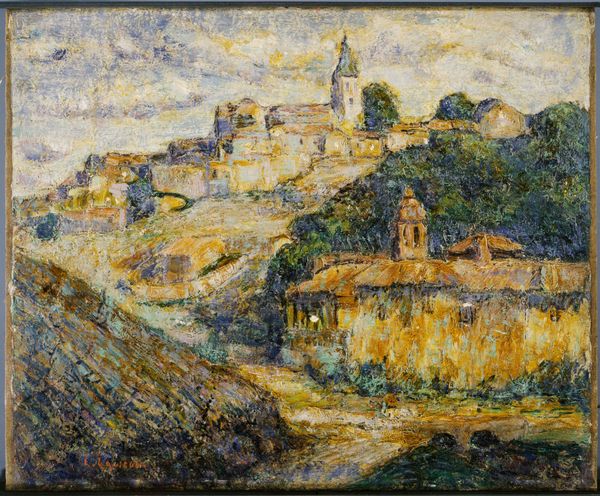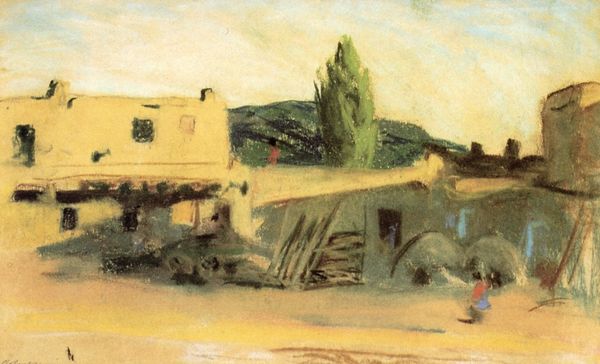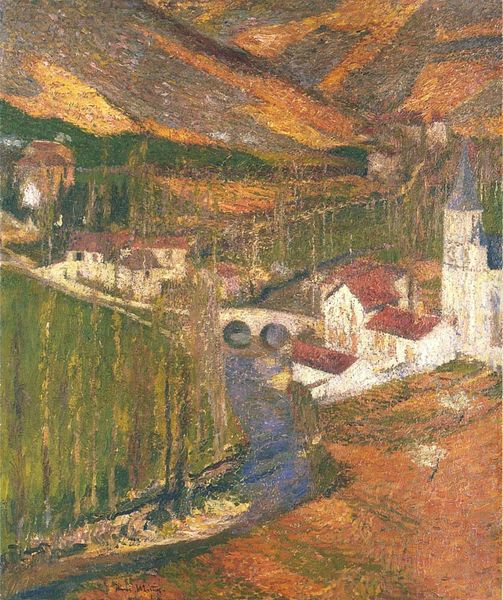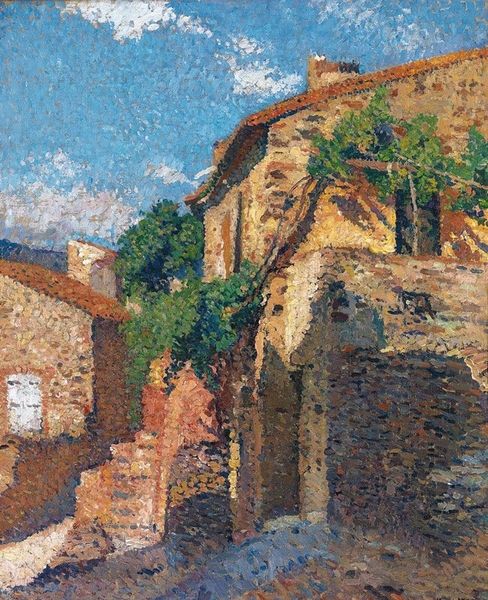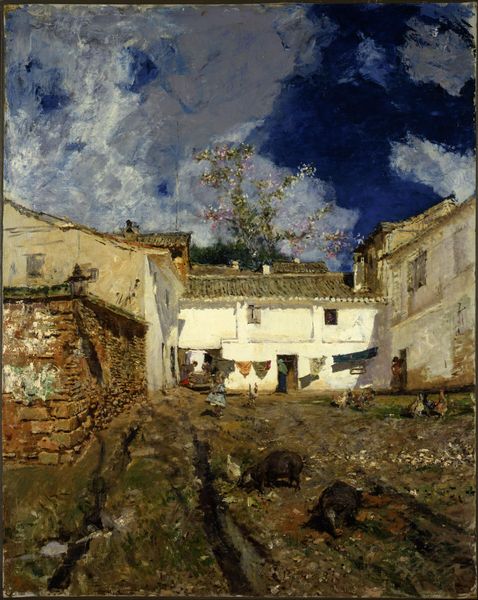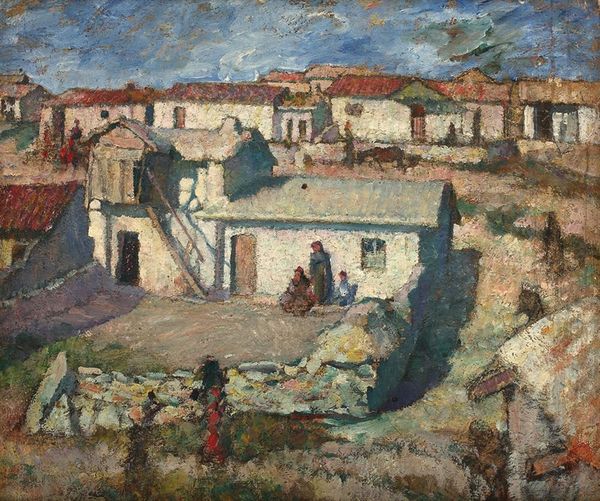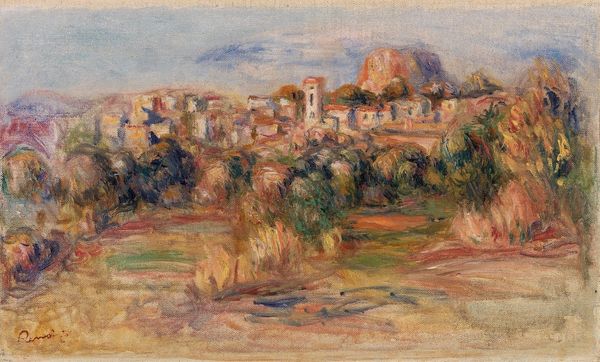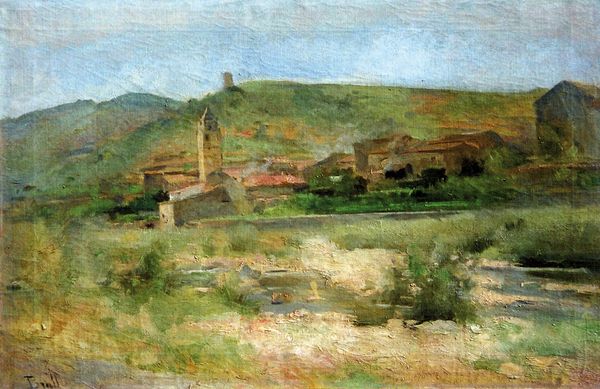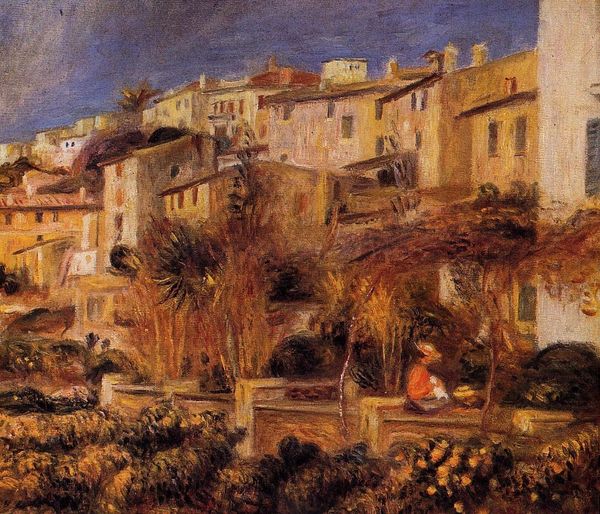
Copyright: Public domain
Curator: Standing here, we're viewing Odilon Redon's "Venetian Landscape" from 1908, currently residing at the Musée des Beaux-Arts de Bordeaux. Editor: Immediately, I'm struck by the heaviness of the atmosphere. The impasto is so thick; it's like the city is emerging directly from the earth and water. There’s almost a claustrophobic mood that seems in direct contrast with traditional Venetian imagery, usually typified by openness and grandeur. Curator: It is atypical. Redon wasn’t merely interested in representation. He deliberately challenges conventional depictions of Venice by focusing on materiality and subjective experience rather than idealized beauty, something he explored by adopting some tenets of early Modernism. Think of turn-of-the-century Venice as a site grappling with rapid change and its own complicated history, with increasing economic struggles. Redon doesn’t shy away from that weight. Editor: Yes, there’s a sense of decay, a tangible connection to the physical substance of the place, not just its surface glamour. He foregrounds the grit and perhaps alludes to labor involved in the trade of the port city. Look at the rough textures. How was this achieved? Curator: Redon likely used a palette knife in addition to brushes, building layer upon layer of oil paint. This almost sculptural approach mirrors Venice itself - built on foundations sunk into the lagoon, the buildings constructed from materials transported by sea. Considering also Venice was often referred to as the gateway between East and West with centuries of trade and labor making it thrive. Editor: That resonates deeply with the presence of the boats resting ashore. Their placement makes me think about the life source and connection of Venice through trade. The composition directs us to acknowledge both the product of Venetian material ingenuity and, by implication, the countless laborers who sustained that economic engine. It's all interconnected! Curator: I agree, seeing Redon grapple with such significant sociopolitical context through landscape. It reminds us to consider the complicated narratives any famous landscape can obscure. Editor: Exactly. It asks us to examine the actual physical construction and human labor that are frequently overlooked in more conventional and, frankly, romantic portrayals. This close inspection into process and social context gives us such a complex experience.
Comments
No comments
Be the first to comment and join the conversation on the ultimate creative platform.
